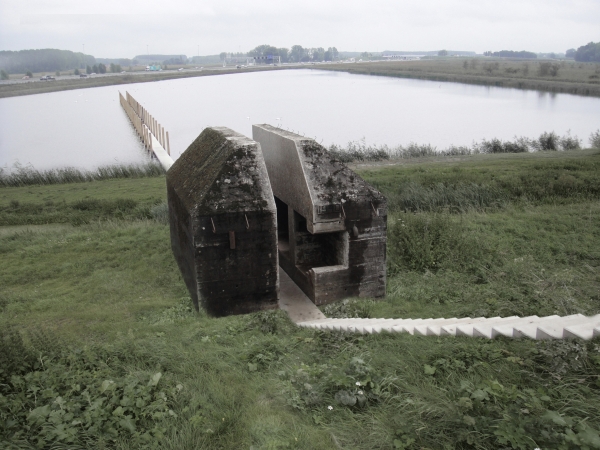War and Peace – Bunker 599
Dutch Design Award 2011
Architectural Review Emerging Architecture Award 2013
Design: Ronald Rietveld/RAAAF and Atelier de Lyon
Text: György Szegő
Photos: RAAAF

The project of RAAAF and Atelier de Lyon turned a redundant Second World War bunker in the Netherlands into a sculptural visitor attraction by slicing it down the middle to reveal its insides. The bunker was built in 1940 to shelter up to 13 soldiers during bombing raids and the intervention by Dutch studios RAAAF and Atelier de Lyon reveals the small, dark spaces inside, which are normally hidden from view. A diamond wire saw being used to cut a straight section through the centre of the monolithic structure, and a crane lifting it away to create a narrow slit. It took 40 days to slice through the solid concrete bunker, which was one of 700 constructed along the New Dutch Waterline, a series of water-based defenses used between 1815 and 1940 to protect the cities of Muiden, Utrecht, Vreeswijk and Gorinchem.
The bunker was subsequently elevated from a municipal monument to a national monument and is now part of the New Dutch Waterline’s bid for UNESCO World Heritage status. The designers also constructed a set of stairs to connect the nearby road to a path that leads through the centre of the bunker onto a wooden boardwalk raised above the flooded area. Visible from the busy A2 motorway, the bunker is part of a 20-year masterplan begun in 2000 to transform the Dutch Waterline into a national park. It was completed in 2010 but officially opened last year and recently won the Architectural Review Award 2013 for Emerging Architecture.



